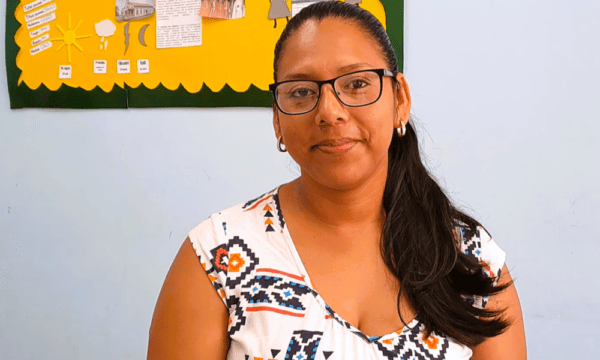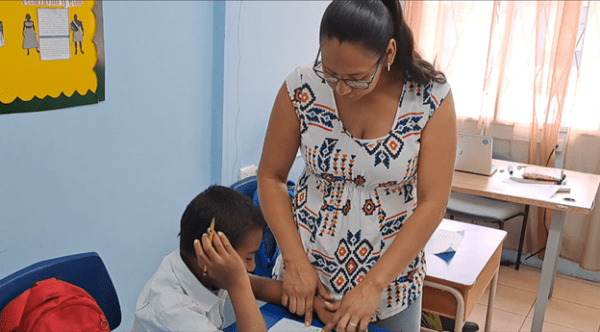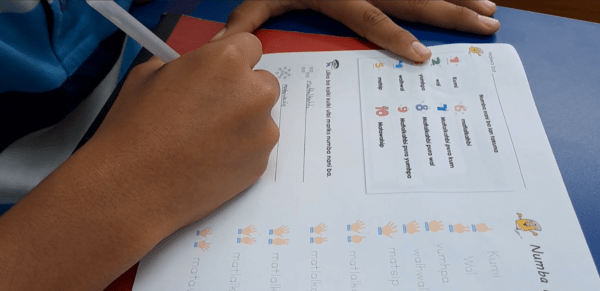Nicaraguan Teacher in Costa Rica Teaches Miskito Children
in their native language

Some 300 Miskito indigenous families have fled the repression and hunger in Nicaragua’s Caribbean coast communities and now live in Costa Rica.
HAVANA TIMES – The Miskito children who live in Costa Rica face more than a change of culture, climate and demanding new norms. They also must understand and be understood in a language that isn’t theirs. They understand little Spanish, read and write little Spanish, and there are those who don’t speak it at all.
But little by little, they must learn the new reality. On the opposite extreme, others struggle to conserve their mother tongue, a cultural treasure little appreciated in their native country, and one that’s not at all stimulated in practice, even though the Nicaraguan authorities claim otherwise.
After the 2018 crisis, generated by a social rebellion all over the country that was violently squashed by the regime of Daniel Ortega, a number of Miskito families fled to Costa Rica. These families number about 300, according to a census conducted by indigenous leaders such as Susan Cunningham, who they call “Big Mama.”
In mid-June 2023, the United Nations High Commissioner for Refugees visited these families in order to document first-hand the deficient and crowded conditions they suffer. The Miskito leaders noted that the members of their communities have settled in the Costa Rican cantons of La Carpio, Alajuelita, Los Rieles, Pavas, Limon, Los Chiles and Talmanca, in the southern region of Nicaragua’s neighbor country.
Concern for a “dying” mother tongue spawns a “lifesaving” idea
In Nicaragua, the mother tongues of the indigenous population are dying, due to the fact that these regions of the country have been utterly forgotten. Residents suffer extreme poverty, limited access to education, and massive exodus. The latter has intensified in the last five years, due to the political and social crisis that began in 2018 and hasn’t ended.

In Costa Rica, families can improve their economic situations, but they find access to the schools seriously limited by the language barrier. According to the community residents, the greatest challenge facing the Miskito student body is: How can they access a monolingual educational system? Achieving this isn’t an easy task, but for a while now they’ve placed their bets on taking advantage of the capacities that already exist within the exiled Miskito community.
For seven years now, for example, teacher Lizeth Pictan Chacon – originally from an indigenous community near Prinzapolka in Nicaragua’s North Caribbean region – teaches her classes in the Miskito language. She made this decision after observing this vacuum in Costa Rica.
“I’ve been living in Costa Rica for 12 years, and for seven of them I’ve worked for the Ministry of Public Education, assuring the attendance of the Miskito children who come to school not speaking Spanish,” she happily explained. The bilingual teacher noted that seven years ago there was a large number of children enrolled who had come from Nicaragua’s Caribbean Coast and didn’t speak Spanish. In the last five years, the quantity of such children has increased.
“As a result, the Public Education Ministry saw the need to develop an initiative to preserve the Miskito language,” Pictan highlighted. She explained that in order to implement this initiative she initially relied on the curriculum support she developed as an indigenous teacher in her original community. “In that case, the work was principally aimed at preserving the language,” she noted.
How does it work?
The classes in Miskito aren’t considered a specialized program, but are taken as a complementary subject. That is, the student attend the class in Miskito when not receiving any of the required classes. Each week they can attend class sessions that last from 80 to 120 minutes.
“The language teaching is developed in two ways – oral and written. The written production is for children who can write their ideas and are in fourth through sixth grade. Oral expression and listening is offered to the smaller children,” the educator detailed.

Lizeth has observed that some of the children who attend speak Miskito correctly, and that encourages her. “We’re sure they can improve in their other subjects using their own language,” she added.
The program began as a pilot program, in just one school with only 10 children participating. This year, it’s grown to encompass 46 elementary students from 6 – 12 years old in three different schools: Finca San Juan, Escuela Lomas del Rio, y Rincon Grande.
A call to action for the parents
In order to integrate the culturally diverse population into the Costa Rican educational system, the Ministry of Education has established a Department of Intercultural Education. That department attends to the indigenous population, or to special migratory situations, like the case of the refugee student population or students who are seeking asylum.
According to the document: “Guidelines for attending to the refugee population in the Costa Rican educational system,” the work in the classroom must be based on the students’ culture of origin, and aimed at integrating the refugee population into Costa Rican society and contributing to breaking the cycle of negative experiences that forced them to leave their country of origin.
Lizeth Pictan advises the Miskito families to take all needed steps to assure their children have access to education, and to take advantage of this initiative, which now forms part of a valuable government education program in that country.
“All children have a right to education. However, sometimes their parents believe that because they don’t have legal documents, they can’t send their children to school. We’ve always told them that they can enroll their children with only some proof of birth,” she said.
“No child should be staying home instead of studying. They need to bring them for enrollment right away, as soon as they turn four and a half for pre-K; or at 5 for kindergarten. At six, children need to be in first grade. This is an important effort, and the parents need to be involved,” the teacher urged.





